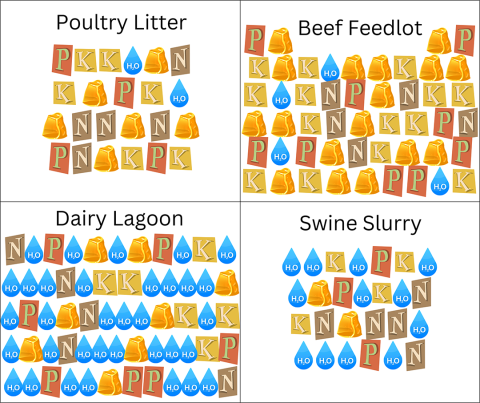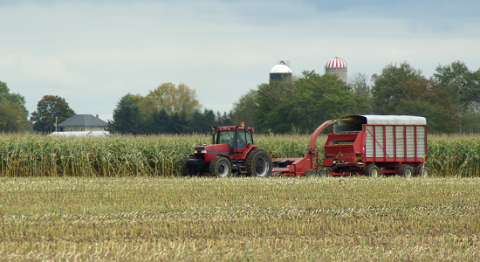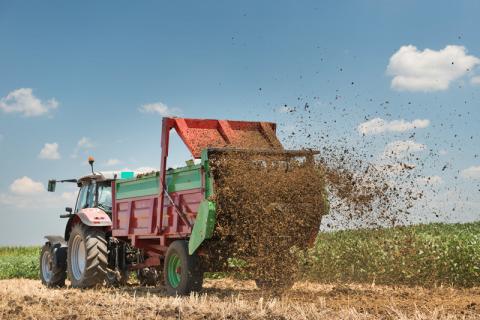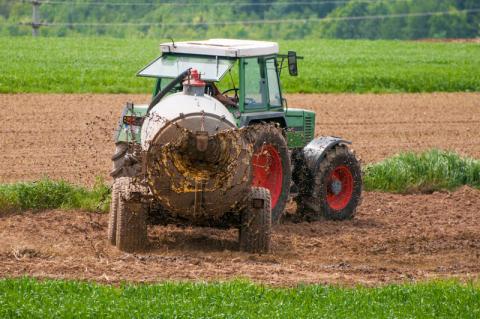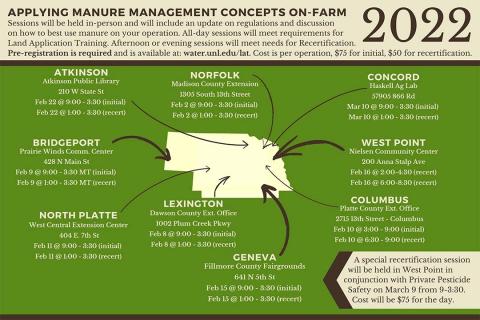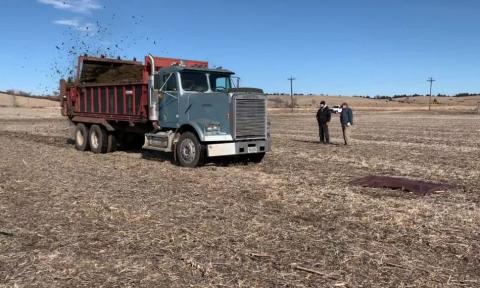2023 Manure Training Locations and Dates
January 12, 2023
All are welcome to attend the training sessions, which will help producers learn how to best use manure on their operations, as well as provide an update on land application regulations.
Not All Manure is Created Equal
October 6, 2022
Animal Manure Management Extension Educator Leslie Johnson reviews the different kinds of manure and how the nutrient contents and characteristics of each product differs.
Manure Application Following Silage
August 2, 2022
Leslie Johnson, Nebraska Extension's animal manure management educator, breaks down the difference between nitrogen and phosphorus rates and how to choose the best method for your operation.
Valuing Manure as a Seller or a Buyer
March 7, 2022
This UNL Water article takes a closer look at the value of manure with respect to nutrient concentrations, crop requirements, soil conditions and potential commercial fertilizer supplements.
Pasture and Forage Minute: Cutting Alfalfa Fertilizer Costs with Manure
February 10, 2022
Save money by getting a jumpstart on your summer annual forage plan. Plus, Nebraska Extension Educator Ben Beckman explains how to prepare alfalfa seed beds with manure to save on fertilizer costs this growing season.
Applying Manure Management Concepts On-farm Programs in February, March
January 4, 2022
At these programs, producers will learn how to determine which fields are the most economical for manure use and which fields can benefit the most from manure’s ability to improve soil health and water quality.
Maximizing Profitability of Manure Use
October 1, 2021
Commercial fertilizer and manure work together well, but only if you know how many nutrients you’re putting out in manure so that you can cut back some on commercial fertilizers and save that expense.
Manure Application Following Silage
August 18, 2021
Animal Manure Management Extension Educator Leslie Johnson discusses how to develop your manure application plan, including best stewardship practices for optimum rates and application methods.

